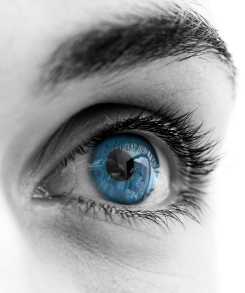 People with excessive tearing, or epiphora, may be surprised to learn that this condition is highly treatable. Our team of renowned ophthalmologists and oculoplastic surgeons specialize in the treatment of problems related to tearing. If you are a candidate for tear duct surgery, you will be treated by an expert physician with state-of-the-art technology.
People with excessive tearing, or epiphora, may be surprised to learn that this condition is highly treatable. Our team of renowned ophthalmologists and oculoplastic surgeons specialize in the treatment of problems related to tearing. If you are a candidate for tear duct surgery, you will be treated by an expert physician with state-of-the-art technology.
For more information, contact the expert Beverly Hills ophthalmologists at La Peer Health Systems today at (855) 360-9119.
Anatomy of the Tear Duct
Healthy tear production and tear drainage is critical to maintaining good vision. Tear film – consisting of a balance of water, oils, and mucus – is necessary to allow light to enter the eye in the optimal fashion. Tears also nourish and lubricate the surface of the eye, and wash away debris.
Although tear flow may seem like a simple process, the tear drainage system actually consists of a complex network of glands and channels. Understanding the anatomy of the tear drainage system and its associated components can help to explain the cause of tearing conditions and the therapeutic options. This is important because both insufficient and excessive tears can result in blurred vision.
Tear production begins in the lacrimal gland, which is situated slightly above and behind the outer portion of the upper eyelid. The lacrimal gland forms the liquid part of the tears. Smaller glands in the eyelids form oil and mucous which allow the tears to smoothly coat the surface of the eye. The secreted tears run down to create a film that covers the eye.
When a blink occurs, excessive tears on the ocular surface are shunted to the punctum, the opening of the tear duct where the tears drain away from the eye. There is a punctum on the inner aspect of each eye that provides access to a series of channels, including the canaliculi, lacrimal sac, and nasolacrimal duct. These channels ultimately lead to the nasal cavity, the final destination for tears in a properly functioning drainage system.
A problem with one or multiple structures in the tear drainage system can result in increased tearing.
Causes of Tearing
Intermittent tearing of the eyes in daily activities can be quite bothersome. Excessive eye tearing often causes a sense of burning, irritation, and blurred vision. Fortunately, most tearing can be traced to a specific cause:
- Dry eye syndrome – Poor formation or maintenance of the tear film over the ocular surface can result in irritation and stimulate the lacrimal gland to secrete watery tears that do not stick to the eye.
- Blepharitis – Irritated eyelids may not produce the appropriate oils, which can result in poor quality of the tears. To compensate, the body flushes the eye with tears.
- Allergies – reaction to outside allergens, such as pollen, can cause excessive tearing
- Lacrimal outflow obstruction – a blockage in the tear drainage system can cause tears to back up and run down the cheek
Many patients may be able to receive relief for a tearing condition through conservative therapies, including antibiotics, anti-inflammatory medication or lubricating eye drops. Tearing due to lacrimal outflow obstruction, however, is commonly treated with surgery.
Causes of Lacrimal Outflow Obstruction
Lacrimal outflow obstruction can be either acquired or present from birth. Blockages within the tear drainage system can result in swelling, pain, infection, or discharge. One of the expert La Peer physicians will perform a thorough examination to determine the nature of the lacrimal outflow obstruction. This condition may be caused or aggravated by the following:
- Anatomically narrow nasolacrimal duct
- Aging
- Infection
- Trauma
- Radiation
- Chemotherapy
Surgical Correction of Lacrimal Obstruction
Surgical correction of lacrimal outflow obstruction depends on the degree of obstruction and the location of the obstruction within the tear drainage system. Procedures offered by the La Peer surgeons to correct lacrimal outflow obstruction include:
- Dacryocystorhinostomy (DCR) – Involves removal of bone adjacent to the nasolacrimal sac in order to bypass a nasolacrimal duct obstruction. This may be performed via an open approach or endoscopically.
- Punctoplasty – Widening of the punctal opening to improve the drainage of tears into the tear ducts.
- Canaliculoplasty – Widening of the canaliculus to improve drainage of tears into the lacrimal sac.
- Nasolacrimal duct dilation – A minimally invasive procedure, where probes and/or a catheter with an inflatable balloon tip is threaded into the nasolacrimal duct to widen the drainage pathway for tears.
- Nasolacrimal duct intubation – This procedure involves the insertion of tiny tubes into the nasolacrimal duct to stent open narrow passages and improve tear drainage.
- Jones tube insertion (conjunctivo-DCR) – This bypass procedure, involving placement of a small glass tube, allows tears to drain from the corner of the eye to the nasal cavity.
Our eye surgeons, expertly trained in both advanced surgical procedures and more conservative therapies, are committed to providing unique, patient-centered care. They will work closely with you to determine whether surgery is necessary, and if so, which procedure will be most effective in resolving your tearing condition.
Contact a Surgeon With an Eye Specialty
Find out more about the various procedures offered by the ophthalmologists and oculoplastic surgeons at La Peer Health Systems in Los Angeles. Contact our eye specialists today at (855) 360-9119 to schedule your initial meeting. Our physicians are leading experts in their fields and will address any questions or concerns that you have.
Next, read about Cataract Surgery.
